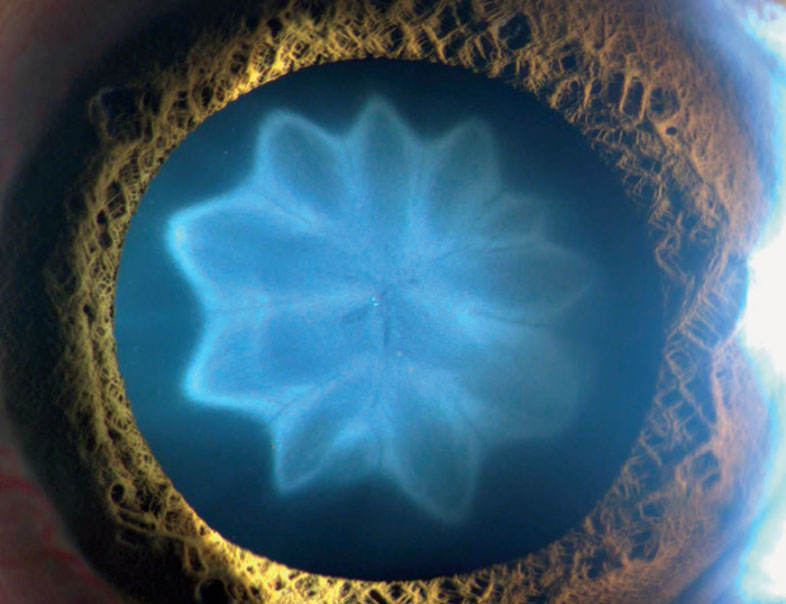Flower-Shaped Cataract Forms in Man's Eye After Bike Accident

After a bicycle accident injured one of his eyes, a 30-year-old man in India developed an unusual flower-shaped cataract, according to a new report of his case.
The man went to the doctor because the vision in his left eye had progressively worsened over several months. He told doctors that he had suffered a concussion and injured his left eye three months earlier, when he was riding his bike without a helmet and collided with a car.
An examination showed the man had a flower-shaped cataract in his left eye, with 10 "petals."
Cataracts can form as a result of a bump or blow to the eye, and when they do, these "traumatic cataracts" classically take on a star or flower shape, the researchers said. In 2013, a man in Australia was found to have a star-shaped cataract after he was punched in an eye.
Traumatic cataracts form because, when the eye receives a blow, shock waves travel through the eye, damaging the lens and causing it to become opaque in some regions, Dr. Mark Fromer, an ophthalmologist at Lenox Hill Hospital in New York City, told Live Science in a 2013 interview. However, it's still not clear why these opaque regions take on certain shapes. [16 Oddest Medical Cases]
The Indian man was advised to have cataract surgery, but he has not yet undergone the procedure, the researchers said.
The report is published yesterday (April 4) in the New England Journal of Medicine.
Get the world’s most fascinating discoveries delivered straight to your inbox.
Follow Rachael Rettner @RachaelRettner. Follow Live Science @livescience, Facebook & Google+. Original article on Live Science.

Rachael is a Live Science contributor, and was a former channel editor and senior writer for Live Science between 2010 and 2022. She has a master's degree in journalism from New York University's Science, Health and Environmental Reporting Program. She also holds a B.S. in molecular biology and an M.S. in biology from the University of California, San Diego. Her work has appeared in Scienceline, The Washington Post and Scientific American.


